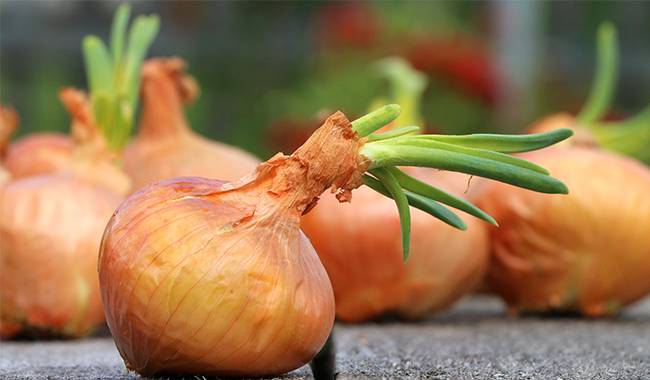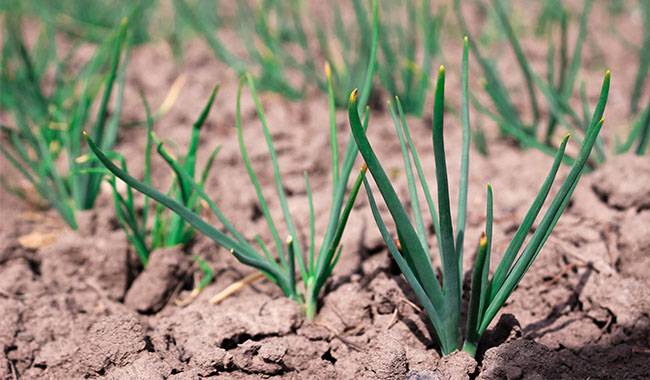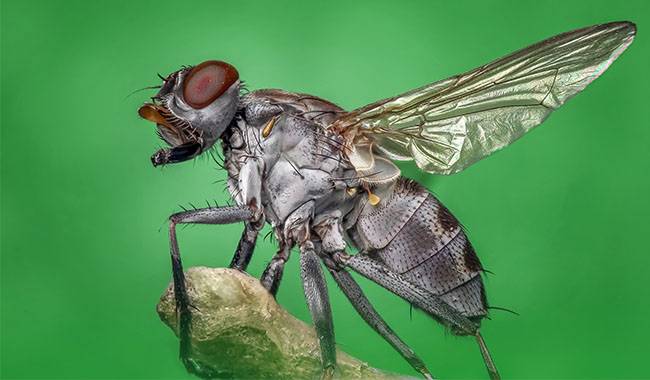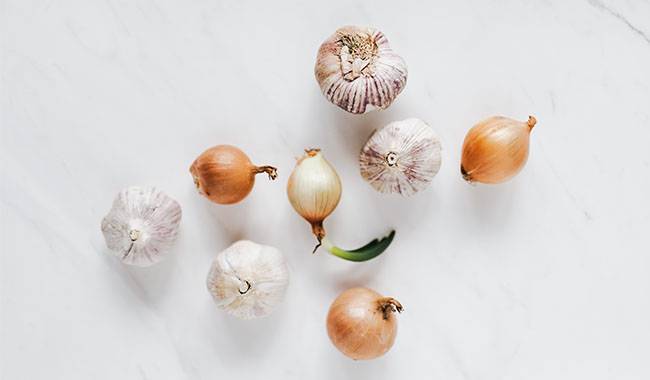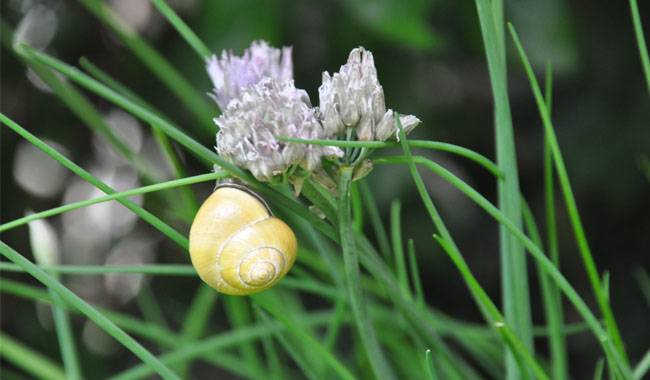
The Welsh onion is reported to be native to Asia. Currently, a large number of wild Welsh onions can be found cultivated in China, Siberia, and Japan.
As a cultivated plant, it is found almost all over the world and it is grown simply for its green appearance, with a more delicate and mellow flavor than onions (they leave almost no offensive aftertaste).
Welsh onion (Allium fistulosum), also known as onion, or even shallot in China, is a perennial herbaceous cultivar of the genus Onion.
HOW TO GROW WELSH ONION
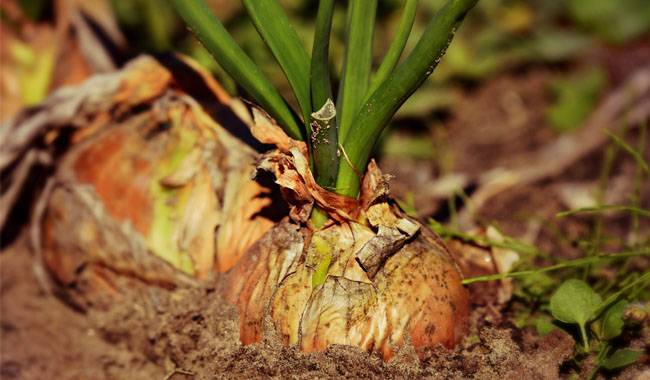
Sowing Welsh onion seeds
Strangely enough, the cultivation of Welsh onion is just a method of germination, which is almost the most reliable option for the propagation of this plant. In Eastern countries, particularly popular is the method of obtaining Welsh onion seedlings, for a simple reason. When using annual Welsh onion, it is sometimes less likely that the plant will be damaged by diseases and, of course, the reception of green substances on the table will be accelerated, which can not be unpleasant.
Seeds are usually sown in late April, sometimes a little earlier, and seedlings are sown in seedbeds starting in late June. This technique of obtaining Welsh onion helps to provide people with fresh vegetables as early as September. During this period, it can be harvested together with pseudobulbs.
Of course, if you want to grow high-quality Welsh onion, you also need to take care of high-quality soil. As a rule, gardeners make the following mixture – part humus and part turf soil mixed thoroughly in equal parts, then put 150-200 g of wood ash (good potash, containing about 5% potassium) in a 10-liter bucket and also pour in 80-85 g of nitroglycerine, then mix the composition most thoroughly.
If you take the ingredients not from your location and you are not sure about them, it is advisable to disinfect the resulting ingredients by steaming them in the oven for an hour, but if you are afraid that such “execution” will kill all possible microorganisms in the soil ingredients (both positive and negative), then simply pour the ingredients in a 2 – 3% solution of manganese.
When the composition is ready, and the container with a height of at least 6inch (15 cm) is ready, with drainage holes in the bottom and a 0.4inch (1 cm) thick layer of pebbles drainage for sowing, you should proceed to prepare the seeds. To do this, Welsh onion seeds should be soaked in melted water or rainwater for 24 hours, changing the water twice during this period.
Then, after extracting them from the water, they should be wrapped in a cloth and kept in the bottom of the refrigerator for a few days. After this time, still, dry the seeds on a dry cloth until they become loose and you can sow them in a box or other container.
Sowing the seeds of Welsh onion should be done in the substrate, embedded 0.6-1.2inch (1.5-3 cm), and go deeper. It is best to place the holes in boxes, spaced 2-2.3inch (5-6 cm) apart from each other.
If you don’t have a box, then don’t feel bad, you can sow the seeds in pots of only 2.3-2.7inch (6-7 cm), in five or seven pieces. By the way, such sowing has a name – bouquet, and if anyone has tried this way, then be sure to write in the comments – whether it was convenient.
After sowing, the seeds should be gentle, 0.6inch (1.5 cm), covered with fresh, loose soil, then level the surface, slightly compacted and compacted. Next, on top of the rolled and compacted soil, you can pour out a few inches of clean river sand. Only after that, you can water the seedlings. Of course, watering should not be done with a watering can or a jar, here you only need to use a sprayer so that all these layers do not get washed off, and in any case, do not wash the seeds on the surface.
After watering (one liter per square meter, preferably using melted water at room temperature or rainwater), it is necessary to cover the container with plastic wrap or glass and place it in a room with a temperature of 64-70°F (18-21°C) above zero until new shoots appear.
Care of Welsh onion
As soon as you see germination on the soil surface, you should remove the film and move the box or container to a southern windowsill, but not to a very warm room, which ideally should be around 50-52°F (10-11°C). After one day, you should try to keep this room at 57-60°F (14-16°C) during the day, and you should lower it to 52-55°F (11-13°C) at night. If you can’t adjust the temperature of the room precisely, you can simply open the windows and doors, and most of all, don’t create a drafty situation.
You will definitely need to support additional lighting until the sprouts become stronger because during this time the sun rises late and sets early and the seedlings will be mediocre and lack sunlight. Ideally, Welsh onion seedlings need 14 hours, which is quite a long day of light.
For these purposes, you can buy an ordinary plant light or LED light and fix it above the Welsh onion sprouts so that its height equals 10-11inch (26-28 cm).
For the first three days after the additional lighting is fixed, you should not turn it off at all, so that the plant will get used to such light, and then you can turn off the light at six o’clock in the morning and turn it on at eight o’clock in the evening.
Decide with the light, now watering. Watering Welsh onion sprouts should be done frequently, but very moderately, without letting the soil dry out or overwatering.
After about seven days, when new shoots appear on the soil surface, it is necessary to fertilize, first introducing 2.5 grams of calcium superphosphate dissolved in water per square meter of soil, then 2.5 grams of potassium sulfate also dissolved in water per square meter of soil. When the Welsh onion shoots develop their first true leaves, the shoots should be thinned to leave 1.2inch (3cm) between the shoots.
Welsh onion sprouts should be allowed to harden about ten days before transplanting them into the open ground. The easiest way to start is to open windows and doors more often and for longer periods at a time. After a few days, if no cold weather is expected, you can try to take the seedlings out for a day first and then bring them to the plot overnight.
Planting seedlings in open spaces
As a rule, Welsh onion seedlings can be planted into beds without fear during the second decade of June, a period when there is certainly no risk of returning frost and the soil will be warm and loose.
Those seedlings with a well-developed root system and three or four fully formed leaves are ready to be planted. Also, to be more sure, you can check the thickness of the stem at the bottom, which should be about five millimeters. The age of the seedlings should be equivalent to two months.
In fact, planting Welsh onion does not differ in any particular way from planting seedlings of any vegetable cultivation. All you need to do is to dig holes in the soil, prepared according to all the above rules, in a row 4-5inch (11-13 cm) deep and leaving a few tens of inches between the rows, and plant seedlings in them. It is best to add a handful of wood ash to the base, moisten the soil, place the seedlings strictly vertically, and compact the soil. Then water and cover with a layer of humus 0.4inch (1cm) thick.
Soil for Welsh onion
The good thing about Welsh onion is that it does not need to be heated at all, for example, for onions. Even if you plant it in a slight semi-mountainous area, he will still have a good harvest. As for the type of soil, the variation here is obvious: Welsh onion prefers fertile soil with plenty of moisture and a weakly acidic or neutral reaction. The best soils for it, according to the gardener, are loamy and sandy soils.
In the country, Welsh onion most often grows in moist and low-lying areas. However, such soils often retain spring and rain, so they will germinate quickly and you will not taste its delicate foliage.
If there is no other way to grow Welsh onion but on acidic soil, then first her “gift”: on the future bed, make 250 grams of wood ash per square meter, and you must do it at least 6 months before planting seedlings. Or still, from the fall, put 200 grams of lime in the soil of cultivation.
In general, the preparation of the soil under the Welsh onion field is quite a responsible issue. Why? This culture belongs to the category of being perennial and grows in one place not for one or two years, but for five whole years.
Therefore, in addition to loosening the soil, plowing, weed removal, and deoxygenation, it is necessary to enrich the soil by making 4-6 kg of humus or compost per square meter (preferably in autumn), 18-19 g of potassium sulfate, 32-35 g of calcium superphosphate and about 25 g of ammonium nitrate, all at the time of plowing, of course.
WHAT CROPS ARE PLANTED AFTER WELSH ONION?
Predecessors are also an important topic – buttermilk will grow best if there are previous crops such as beans, tomatoes, or cabbage, but if there are garlic, onions, cucumbers, carrots, or buttermilk, it is best to wait at least a year.
SOWING ONIONS IN OPEN FIELDS
Few people know that Welsh onion, sown in the open ground, cannot be sown once, or even twice, but three times a season. The best dates are April, June, and July, as well as October and November.
The late autumn period, more correctly called winter sowing, usually serves the same purpose as spring: very early in the season, you get the first green plants.
When planting in winter, it is not necessary to prepare the site too early, the best option is summer, but once the temperature drops significantly and becomes within a few degrees, then the seeds, which do not need to be cultivated beforehand for seedlings, can be sown to a depth of about a few inches if the soil site is heavy, or to a slightly greater depth of 1-1.5inch (3-4 cm) if it is light because there they can freeze more quickly.
When sowing in late fall, the distance between rows can remain the same – about ten inches. After sowing, the plot should be nicely leveled and compacted, making sure to cover it with a few inches of humus. Some resourceful gardeners also throw a few spruce paws on top – they retain snow very well.
Once spring arrives, beds planted with late fall crops of Welsh onion should be opened, but not completely. After the humus is removed, the soil (bed) should be covered with polyethylene film to create a greenhouse effect for the seeds and make them germinate more quickly.
Interestingly, if everything goes well, Welsh onion, sown in late autumn, starts germinating almost at the first rays of the sun. Once shoots appear, they can be thinned after about a week.
WELSH ONION ON THE WINDOWSILL
However strange it may look, Welsh onion can even be grown on an ordinary windowsill, for example, if you simply do not have a plot of land or space above for such cultivation. Growing (kicking out) Welsh onion on a windowsill can be done in the cold of winter.
All you need is – it during the fall (usually October) to dig out a two- or three-year-old plant from the soil, be sure to have a soil root ball so as not to damage the roots, and plant it in pots and containers with mandatory drainage holes in the bottom and a layer of pebbles drainage, 0.5 cm) thick; the container itself should be 12-15% wider than the soil block from which the plant was the dugout.
Then still dig out the plants and plant them in pots without damaging the root ball in a room with a temperature of about 64-70 °F (18-21 °C) and 80% humidity. Usually, you are sure to enjoy the fresh green color of Welsh onion within a month.
HOW TO CARE FOR WELSH ONION IN THE OPEN GROUND
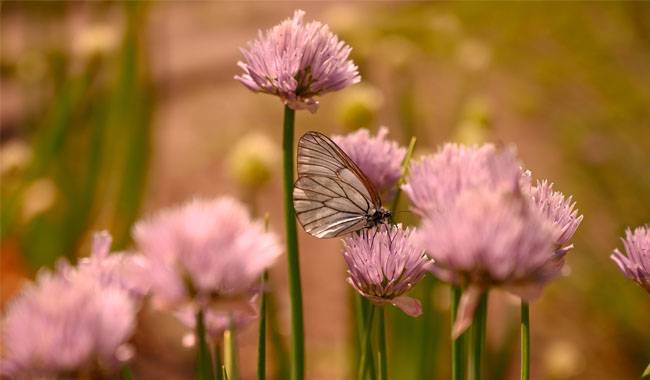
Growing Welsh onion is not difficult at all – watering, loosening the soil, removing weeds, fertilizing, and preventing pests and diseases.
The initial loosening should be done as soon as the seedlings grow taller, which is about a week after they appear on the soil surface. Five to six loosening operations should be carried out on these plants throughout the season. Loosening the soil can easily be combined with removing weeds from the biting zone and around the plants. If you don’t want to loosen the soil and remove weeds often, you can cover the soil surface with a few inches of humus.
Watering Welsh onion
Welsh onion is considered to be a moisture-loving culture, so in nature, it settles in places where there is a lot of moisture. For this reason, the soil must be moderately but consistently moist. Ideally, the soil in open areas should be moistened to a depth of 6.5-7.5inch (17-19 cm).
Of course, you should also take into account natural rainfall: therefore, if it rains frequently, you may not need to irrigate at all. In normal weather, watering a few times a week is enough, or every other day if it is very hot. When watering, try to use settled water at room temperature, such as rainwater from a wooden barrel.
Fertilization Welsh onion
We have not mentioned much about fertilization. After planting seedlings on the beds, it is necessary to make them dissolved in a solution of 10 times cow manure or diluted in 15 times of chicken manure infusion. Normally, 25-30 grams per hole are used when sowing seedlings. If the soil is very fertile, then, as we have already written, a handful of wood ashes pre-wetted with water is enough.
In the future, it is possible to make only one mix, since Welsh onion is good at accumulating nitrates. Repeat applications can be made within 10-12 days after the first application, watering the soil before harvest and pouring 50-70 g of wood ash under each bush.
PESTS AND DISEASES OF WELSH ONION
It has been noted that on good, nutritious soil the plants are practically free from disease and pests, but sometimes this still happens. It is common to suffer from Welsh onion weevils, Welsh onion moths, and Welsh onion flies.
Welsh onion weevils actually eat the leaves from the inside, leaving only a thin layer of skin. You can use an approved insecticide, such as an insecticide or acaricide, to deal with it, but follow the package directions closely.
Welsh onion weevil – It makes holes in Welsh onion leaves and sucks the sap from the leaves. Weevil larvae gnaw on the leaves and feed on their contents.
Welsh onion fly – its larvae feed on the contents of Welsh onion bulbs.
Insecticides can kill all of these if you follow the directions for use closely.
In diseases, Welsh onion affects periwinkle, the grayish-purple mold that covers the leaves, and copper-based medications that are effective against it, such as fungicides, are usually sufficient for a few treatments.
In order to completely keep pests out of your plot, you must follow crop rotations, not overplanting, not overwatering plants, controlling weeds, loosening soil, and paying more attention to plants. For example, you can treat plants with a solution of mustard powder (one tablespoon per bucket of water) during the initial stages of blister beetle emergence; to deal with Welsh onion flies, you can water plants several times per season with a potato top dip (one kilogram of potato tops per bucket of water, at a rate of one per square meter) several times per season, or plant carrots near the garden bed.
HARVESTING AND STORING WELSH ONION
As you know, Welsh onion is grown for greenery and forms only a thickening in the soil during the season, called pseudobulbs. You can harvest the greens from midsummer until fall, as the greens are growing.
The next year, when Welsh onion is more than a year old, you can start cutting vegetables as soon as spring appears. Cutting stops 35-45 days before the arrival of cold weather so that the bulbs can be prepared for overwintering. As a result, the harvest can vary from two (seedlings) to four (adults) in one season.
The rape can be cut when it grows to 7-9inch (18-23 cm) tall. The cutting must be done on the soil surface, then the leaves are bundled into a bundle, cooled and placed in the refrigerator, and wrapped in a plastic bag.
If for some reason you need to dig up the bulbs of Welsh onion and keep them in this form until spring, then try to keep them in the refrigerator at a temperature of about one degree. Importantly, do not cut the leaves from the bulbs.




